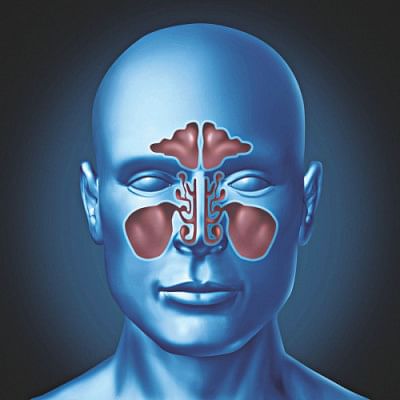Common nasal disorders

The nose is the first part of the respiratory system, and plays an important role in the function of the olfactory senses. So, whenever there is anything wrong with the nasal structure, difficulty in breathing can arise, which ultimately affects the rest of the body and a person's overall lifestyle.
The most common disorder of the nose is nasal obstruction, or blockage of the nose. This can happen if there is narrowing of the nasal passage due to causes like a deviation of the nasal partition known as DNS; there may be some overgrowth of tissues inside the nose, which is known as hypertrophied turbinates; there may be a polypoid mass, or even a small tumour-like structure growing inside the nose.
There are also conditions where there may not be any physical blockage, but just a feeling of blockage like allergic rhinitis, chronic rhinitis, etc. Whatever the reasons may be, it is best to get it checked early so as to avoid unnecessary complications.
So, when should one worry about something being wrong?
Usually the symptoms start like a common cold, or flu, which is usually related to viral infections. When and if there is a blockage, the patient will feel discomfort in breathing. There will be no respiratory distress as breathing can also take place through the mouth. Also there may be some loss of smell. The nasal discharge, depending on the cause, will be either whitish, or yellowish in colour. Usually these patients also complain of headaches as there is pressure on nerves due to swelling and improper oxygenation. Patient's partners may complain of snoring and even restless sleep patterns!
In case of children, if they get frequent bouts of colds or start to breathe through the mouth, snore, or complain of nasal blockage, a visit to the specialist is a must. Sometimes we find parents ignoring the cold as an allergy, but even if the child has an allergy, it should be diagnosed and treated accordingly.
If, after consulting a specialist, a blockage due to a growth inside the nose or a deviated septum or the like is diagnosed, then the extent must be verified. The blockage may not be even in the nose but the area behind it, known as the nasopharynx, which is the case in some children.
Small blocks usually are treated with medications and will be better, but some blockages will probably require some kind of procedure. Sometimes we get patients who ignore these medical advices and then come back with more complications at a later period. A growth will not decrease in size by itself, and often needs some kind of intervention.
If left for long, it will just keep growing. It's always best to get treatment at an early stage because with age, other conditions like diabetes, hypertension or heart disease may develop. Although these are ailments that can be controlled easily, there is always a risk involved if surgery is needed.
Conditions like allergic rhinitis or sinusitis can be treated with medicine and some lifestyle changes. Maintaining a regular healthy lifestyle and avoiding things that cause allergic breakouts help a lot in these cases. Once again, as medical practitioners, we say that there is a belief that certain foods like beef, hilsa, prawns, aubergines, etc. are "allergy-triggering foods." That may be true sometimes, but symptoms have to be observed to identify the exact trigger. If allergies remain untreated, they may cause chronic headaches and polyp formation inside the sinus and nasal mucosa.
Some patients develop snoring, which may cause difficulty in sleep patterns. This can be assessed to see if the patient has Sleep Apnea Syndrome. Again, when diagnosed, it is treatable.
Nowadays, we get a lot of patients who complain of "having a polypus" inside their nose, but usually they do not have any problem at all; they look in the mirror and then come to their own conclusion.
It's best not to do this as you do not know normal anatomy, and that can make a patient worried and obsessed. The red area on the sides of the nose are called turbinates, and they may swell with colds and rhinitis, but usually regress. They are not same as nasal polyps. Instead of coming to your own conclusion, it is best to go to a specialist and get a check-up.
Although some people think that these nasal disturbances are not severe enough to be of concern, they do cause discomfort in daily life.
Chronic headaches, constant nasal discharge, hocking of the throat, and of course nasal blockage all can be disturbing in everyday life. The problems can be solved very easily by medication and simple lifestyle changes.
Photo: Collected

 For all latest news, follow The Daily Star's Google News channel.
For all latest news, follow The Daily Star's Google News channel. 



Comments